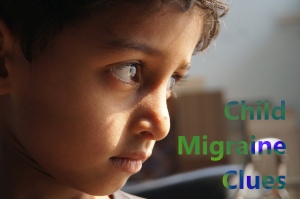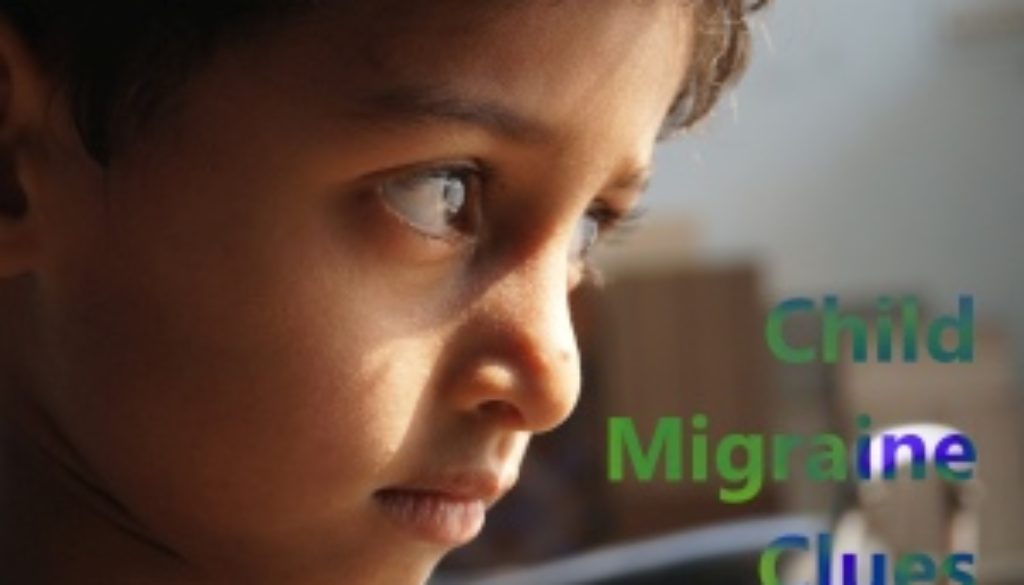18 Reasons to Suspect Migraine in Your Child
Migraine in children can be very difficult to diagnose. If children have had their symptoms for a long time, it may be normal to them, and you might not even hear a complaint. Or, they will just know they’re “not feeling well” and not be able to explain why.
 So, here are 18 reasons to suspect that your child may have migraine. If you suspect migraine, watch your child closely and consider a doctor’s visit.
So, here are 18 reasons to suspect that your child may have migraine. If you suspect migraine, watch your child closely and consider a doctor’s visit.
- A close family member has migraine: If so, the child is much more likely to develop migraine than the general population. Do not, however, assume that the child will have the same symptoms or pattern of attacks.
- Trips to the bathroom: Vomiting is common in children with migraine. A child may go to the bathroom to throw up and not tell anyone.
- Changes in behaviour: Remember, migraine usually isn’t constant. Watch for days when there are changes in your child’s behaviour.
- Headache: Migraine attacks in children do not always include headache. But if your child is complaining of headache, it’s not normal. Try to find out as much as you can – how long it lasts, what kind of pain, etc.
- “Patterns of avoidance”: Children may not even consciously think about what is bothering them. But a parent may be able to tell if a child is bothered by light or noise. Children also may avoid physical activities that they usually enjoy.
- Car sickness: Car sickness may not be migraine, but it may be a sign that the child may develop migraine. Watch for nausea and vomiting when you’re not travelling.
- Depression: A child may be depressed because of their symptoms, but depression is also a condition that often goes along with migraine, although scientists aren’t 100% sure why.
- Trouble paying attention: Again, remember that a migraine in children will normally last for a day or two at most. Watch for certain days when your child is having trouble concentrating. Ask them how they feel.
- Abdominal pain: Often, instead of headache a child will have abdominal pain or discomfort. If you start seeing this come and go, it may be a sign of migraine.
- Puberty: Although children do have migraine, it is much more common after puberty hits. In girls, watch for monthly attacks. Do not brush these headaches off as “normal”.
- Tiredness: Sleep disorders are common in children with migraine.
- Retreat: Children may retreat to their rooms, or go lie down in the dark.
- Head trauma: A concussion can lead to certain headache disorders. Be sure to see a doctor and try to avoid further injury.
- Trouble at school: Teachers can use these clues as well. But if parents find that their children are having trouble at school, they may discover that migraine symptoms (difficulty in concentrating, avoidance of physical activity, hiding symptoms) may explain some of the problems.
- Changes in appearance: Shadows under the eyes, looking flushed or pale.
- Hyperactivity: Yes, migraine symptoms may actually cause some hyperactivity. Again, watch for changes in behaviour that last a few hours.
- Changes in eating patterns: Avoidance of certain foods, or craving for certain foods.
- Headache with Congestion: Congestion, runny nose, watery eyes – all common migraine symptoms.
As you can see, many of these clues could relate to other conditions, or even to just having a bad day. They are not proof of migraine. Also, remember that you may only see one or two of these clues – every child is different, and no child will exhibit all of these.
Watch for something that follows a pattern – you notice certain symptoms on three occasions that go away in a day or two. If you suspect migraine, keep track of the symptoms as much as you can and talk to a doctor.

